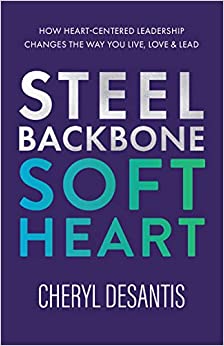|
In the competitive landscape of the modern business world, attracting and retaining top talent is crucial for sustained success. While various factors contribute to an organization's ability to recruit and retain skilled professionals, compensation remains a critical component. In this blog post, we will delve into the significance of compensation strategy, emphasizing the importance of staying ahead of the market and the potential consequences of failing to do so.
Compensation: Table Stakes for Talent Acquisition and Retention: Compensation serves as a foundational element of any comprehensive talent management strategy. It directly affects an organization's ability to attract and retain high-caliber employees. Competitive compensation packages not only entice talented individuals to join a company but also act as a motivating factor to encourage employees to stay and contribute their best efforts. Inflationary Adjustment: The Catch-Up Game: To ensure competitiveness in the talent market, organizations must regularly assess their compensation levels. Falling behind the market in terms of pay rates can have detrimental effects on an organization's ability to retain top talent. Research suggests that if a company finds itself lagging behind its peers in compensation, it must consider inflating salaries by 7-10% to catch up. This adjustment is necessary to avoid losing valuable employees to competitors who offer more attractive compensation packages. The Ripple Effect of Falling Behind: Failure to catch up with market compensation rates can lead to a domino effect within an organization. As talented employees realize they can earn significantly more elsewhere, they may be inclined to seek new opportunities, which disrupts team dynamics, institutional knowledge, and the overall productivity of the organization. Losing experienced and skilled personnel can be detrimental to long-term success. The Dilemma of Bringing in New Talent: When organizations fail to catch up with market compensation rates and lose top talent, they are left with the challenge of replacing those individuals. However, recruiting new talent at higher salaries than the existing workforce can create internal strife. Long-term employees who have been loyal to the organization might feel undervalued and demotivated, causing morale issues and potential turnover among the remaining workforce. The Consequences of Inaction: Organizations that neglect to prioritize compensation strategy and fail to catch up with market rates risk significant consequences. They may find themselves struggling to attract top talent, losing valuable employees to competitors, and facing internal disruptions and low morale. Ultimately, the failure to adapt compensation practices to align with the market can hinder an organization's ability to succeed and grow. Compensation strategy is not just a mere administrative task; it is a critical component of talent management. To attract and retain top talent, organizations must ensure their compensation packages are competitive in the market. Falling behind can have far-reaching consequences, including talent attrition, internal dissatisfaction, and overall organizational failure. Therefore, it is imperative for organizations to regularly assess and adjust their compensation strategies to avoid these pitfalls and maintain a thriving workforce.
0 Comments
Bringing Humanity Back: The Power of Balancing Emotional INtelligence and Business Objectives in HR7/18/2023 I want to share some thoughts with you today about the power of bringing humanity back into human resources. I'm sure many of you can relate to that feeling in the pit of your stomach when you know an unfun conversation needs to happen, but you also understand that it's your responsibility as an HR professional to address it. It's not always easy, but it's necessary.
Today, I want to talk about a book that has had a significant impact on me personally and professionally. The book is called "Steel Backbone, Soft Heart," and it explores the idea of balancing the human side of HR with the business objectives of an organization. The author, whom I recently had the opportunity to interview, shared their motivations for writing the book and their journey towards recognizing the importance of humanity in the workplace. In 2021, there was a lot going on in the world, and many of us had our own awakenings. I had a similar experience within my own organization, realizing that the more humanistic I could be, the more effective I would be in my role. This realization challenged the traditional school of thought I was educated in, where the focus was often on hard skills rather than softer skills. One of the key takeaways from my conversation with the author was the importance of leaders who inspire and foster a sense of loyalty among their teams. These are the leaders who truly make a difference because they are not only smart and talented but also genuinely amazing humans. They have a positive impact on those around them and create an environment where people feel valued and supported. However, it's not always easy to shift the perception of leadership capabilities that are considered "soft." During our conversation, I asked the author how they dealt with pushback from their team or leaders who dismissed these approaches as HR nonsense. They emphasized the importance of leading by example, demonstrating the value of these human-centric practices through tangible outcomes and success stories. It's about showing the positive impact that a focus on humanity can have on employee engagement, retention, and overall organizational performance. We also discussed the idea of applying customer experience principles to employee experience. Just as we focus on understanding and meeting the needs of our customers, we should do the same for our employees. By creating a culture of empathy, listening, and genuine care, we can foster a sense of loyalty and engagement among our workforce. This approach requires a shift in mindset and the recognition that employees are just as important as customers when it comes to driving organizational success. Of course, there are challenges along the way. As HR professionals, we need to find a balance between the soft heart and the steel backbone. We have to address business objectives and meet deadlines while also caring for the well-being of our employees. It's not an easy task, but it's crucial for long-term success. I've learned that building strong relationships with individuals on your team and truly understanding who they are as people can make a significant difference. By recognizing their goals, strengths, and challenges, we can provide the support they need to thrive both personally and professionally. It's about creating an environment where employees feel safe to bring their whole selves to work, knowing that they will be supported and valued. Additionally, embracing open and honest feedback, given with candor and kindness, is essential. Feedback is a gift, and when someone cares enough to share their perspective, it demonstrates their investment in your growth and success. It takes courage to be vulnerable, to ask questions, and to listen to the answers even when they might be uncomfortable. But by doing so, we can foster an environment of trust and continuous improvement. In the end, loyalty and retention are the results of a culture that values and supports its employees. By cultivating empathy, encouraging open communication, and providing opportunities for growth. In today's fast-paced business landscape, Human Resources (HR) strategic planning plays a crucial role in shaping the future of organizations. A well-defined HR strategic plan aligns people practices with overall business objectives, fosters employee engagement and retention, and creates a positive work environment. In this blog post, we will explore the key components of a modern HR strategic plan and the importance of effective execution to drive organizational success.
I think about this in three key buckets: A HR Strategic Plan, A HR Roadmap, and a HR Project Management System.
A well-crafted HR strategic plan is crucial for HR professionals to align people practices with business objectives, foster employee engagement, and drive organizational success. By developing a clear roadmap, staying committed to execution, and adapting to changing needs, HR can position itself as a strategic partner within the organization and contribute to its long-term growth and prosperity. In the world of business, the phrase "a seat at the table" symbolizes an active role where one's opinions are heard and influence is exerted in decision-making processes. Human Resources professionals have long sought to secure this coveted seat, to have a significant impact on the direction and success of their organizations. In this blog post, we will explore the importance of HR earning a seat at the table, the steps required to achieve it, and the benefits it brings to both HR and the organization as a whole.
Also, Don't be Toby... |
About The BlogAre you tired of the same old boring advice about how to succeed in your career? Do you feel like you're stuck in a rut and can't seem to break free? If so, then you need to check out our blog! Our blog is all about thinking differently when it comes to the world of work. We don't just regurgitate tired old advice - we bring you fresh insights from our own careers and from interviews with experts on our podcast, Rebel HR. So if you're ready to shake things up and start approaching your career in a new way, then our blog is a must-read. Don't settle for mediocrity - join us and let's revolutionize the world of work together! Archives
October 2023
Categories
All
|



 RSS Feed
RSS Feed
